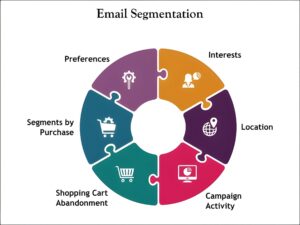The Beginner’s Guide to Wireframing Your Website
Starting a new website project can feel overwhelming. Before diving into design or coding, it’s crucial to plan the structure and functionality of your site. This is where wireframing comes in-a powerful step in the web design process that helps map out your website’s layout, content organization, and user experience.
In this beginner’s guide, we’ll walk you through what wireframing is, why it matters, and how to create wireframes that can set your website project on the path to success. Whether you’re building a personal blog, a business site, or an e-commerce store, mastering wireframing will save time, reduce errors, and improve communication between you and your team.
What Is Wireframing in Web Design?
Wireframing is the creation of a simple, low-fidelity visual guide that outlines the skeletal framework of your website. Think of it as the blueprint of a building but for your website. Wireframes focus on structure, hierarchy, and functionality, rather than colors, images, or intricate design details.
Wireframes can be hand-drawn sketches or created using specialized wireframing software. They typically include:
- Placement of key page elements (menus, headers, footers, content blocks)
- Navigation flow between pages
- Content layout prioritization
- Basic interface elements like buttons and input fields
Why Is Wireframing Important for Your Website?
Wireframing is a foundational step that streamlines your web design and development stages. Here are some key benefits:
Benefits of Wireframing
- Clarifies Project Vision: Wireframes facilitate clear communication of ideas between clients, designers, and developers.
- Saves Time & Money: Identifying layout and usability issues early reduces costly revisions later.
- Improves Usability: It helps design smooth user navigation by emphasizing logical structure and flow.
- Focus on Content Hierarchy: Wireframes ensure your content is prioritized effectively for your users’ needs.
- Enables Better Collaboration: Stakeholders can provide feedback on wireframes before actual design work starts.
Step-by-Step Guide: How to Wireframe Your Website
Follow these practical steps to create your first website wireframe efficiently.
1. Define Your Website Goals and Audience
Understand what you want your site to achieve and who your target users are. This will influence the layout and features you prioritize.
2. Research and Gather Inspiration
Look at competitors’ sites or design galleries to get an idea of layouts and elements that resonate with your goal and audience.
3. List Main Features and Content Elements
Create a clear inventory of all necessary features (e.g., contact forms, product galleries, blog sections) and content types.
4. Choose the Right Wireframing Tool
There are many options-from paper and pencil to digital tools like:
- Figma
- Adobe XD
- Balsamiq
- Sketch
- Wireframe.cc
5. Sketch a Rough Layout
Start with low-fidelity sketches that highlight the website’s main areas: header, navigation, content zones, sidebar, footer, and call-to-action placement.
6. Add Details and Functionality
In your next iteration, label buttons, links, and interactive areas, and sketch out user flow paths-how a visitor moves through your site.
7. Review and Collect Feedback
Share your wireframe with team members or stakeholders and incorporate constructive feedback to refine the layout.
Wireframe vs. Prototype vs. Mockup: What’s the Difference?
| Term | Definition | Purpose |
|---|---|---|
| Wireframe | Simple black-and-white layout showing structure and placement of elements. | Plan content hierarchy and navigation flow. |
| Prototype | Clickable, interactive representation of the website with basic user interaction. | Test usability and user journeys. |
| Mockup | High-fidelity, static design showing colors, typography, and visual details. | Visualize final site appearance. |
Practical Tips for Effective Wireframing
- Keep It Simple: Use basic shapes and placeholders instead of detailed content.
- Focus on User Flow: Think about what users need to accomplish on each page.
- Use Grids and Alignment: Maintain consistent spacing and alignment for balance and clarity.
- Iterate Quickly: Make adjustments rapidly without getting stuck on perfection.
- Label Elements Clearly: Use annotations to clarify interactive components or content types.
- Test Early: Show wireframes to real users or colleagues to gather honest feedback.
Case Study: How Wireframing Saved a Website Redesign
One startup planned to redesign its product landing page but neglected initial wireframing. The team proceeded straight to high-fidelity mockups, only to discover confusing navigation and poor content hierarchy after user testing, delaying launch by weeks.
After adopting wireframing for their next project, they structured the homepage wireframe around customer needs and feedback. This early planning reduced design iterations, improved stakeholder buy-in, and accelerated time-to-market.
Firsthand Experience: My Wireframing Journey
When I started web design, I often jumped into colorful designs without mapping out the layout first. This often led to unnecessary changes and frustration. After learning wireframing, my workflow transformed. I now create simple wireframes for every project, which helps clarify goals, align team members, and speeds up development.
Wireframing became the key to communicating my ideas clearly and avoiding costly errors. If you’re new to web design, I highly recommend adopting wireframing-your future self and your project budget will thank you.
Conclusion: Start Wireframing Today for a Better Website Tomorrow
Wireframing is an indispensable tool in website creation that saves time, money, and frustration. By focusing on structure and user experience early, you set a strong foundation for your web project’s success.
Whether you’re a solo blogger, small business owner, or part of a large development team, wireframing will improve your website planning process and final user experience. Start simple, iterate quickly, and keep user needs at the heart of your wireframes. Your website’s usability and clarity will speak for itself.
Ready to create your first wireframe? Grab a pencil or pick one of the many user-friendly wireframing tools and begin mapping out your website’s structure today!








